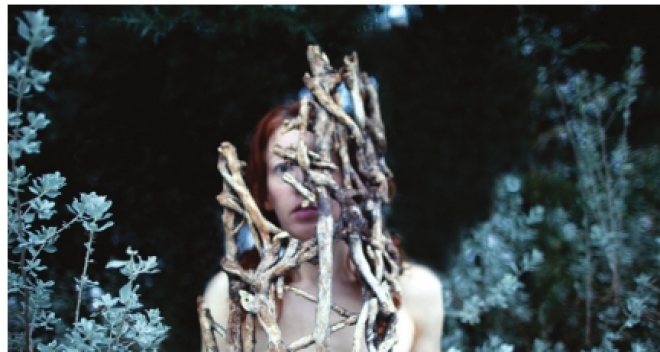CRITICAL MASS
Critic names most potential work for solo exhibition

Three flights up into an expanse of sun-drenched, white walls, filled with over 100 pieces of visual art is, well, a visually arresting array.
Alone, as judge and jury, I was “sworn to decide on the facts, while remaining impartial and independent.”
As publisher of Juxtapoz magazine, the opportunity to serve as critic in the annual Northwest Louisiana Artists Showcase was an exciting opportunity, a treasure trove for a media site always on the hunt for source material. But this wasn’t about the next newsstand issue, this was about spending time, and then some, with each piece – and announcing a winner the following evening.
Paintings were tightly hung in a large rectangular space and adjoining alcove, which provided plenty of room for 3D pieces. Porcelain, sculpture, textiles and photography shared the expanse with a panoply of painting styles.
My criteria for Best in Show was focused on which artist, based on his or her chosen submission, had the most potential to produce a compelling, expansive solo exhibition this summer at artspace. Perhaps, because of the ascendancy of street art and immersive installations, large statement pieces are popular.
But is a big blockbuster movie better than a quiet dialogue driven film? Epic or haiku?
Mandie Ebarb’s “Three Vessels” were absolutely exquisite porcelains, perfect renderings of quiet fluidity, like suspended poured cream, one in an all-over dimpled pattern. Bill Roberson chose to draw the small-scale “From Slave to Servant” in pencil, a fittingly humble tool for the subject of dignity and subservience. “The Mixed- Media Basin Blues” by Mark Charleville sang softly, his delicate beige, blue and pale green palette reminiscent of an old film where images dissolve but linger. Orange in the background flickered, indicating the fisherman’s long day.
Two large pieces made an impression, one direct, and the other seductively obtuse.
In “Green Stamp” by Jeormie Journell, its scalloped wooden frame mimicked the ministickered coupons popular mid-century.
His effective wordplay commented on the diminution of our currency and common sense as well as class disparity. “Waiting I/ Metonoia/Waiting II” by Jason Pliler was as complex as its components of photography, pigment print on tissue and watercolor papers, gold leaf and resin. The three sepia-toned panels were like daguerreotypes, inviting an historical research of the nudes. Were the gold censor bars granting anonymity or glorification of the depicted women?
But across the way, Devin Rachul McClintic’s archival print, “Vine Escutcheon,” kept beckoning, its painterly quality giving the photograph an almost underwater sheen.
The strong central, almost androgynous image confronts the viewer through one eye, the other obscured by a weathered shield, the escutcheon, whose pattern is reinforced in the finely cross-hatched frame. Emerging from a primordial depth of woods, the figure could be valiant or vulnerable, defiant or endangered.
Can we handle long range, high capacity weapons? That a piece so luxuriant in color and suggestive of texture could provide such mystery and provoke so many questions justifies my selection of McClintic as a visual artist, to delight the mind’s eye in a future show.
Gwynn Vittello is the publisher of Juxtapoz magazine.
